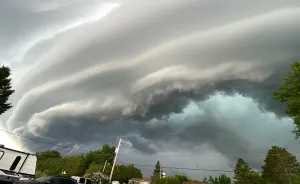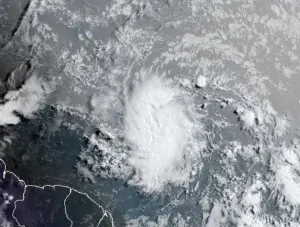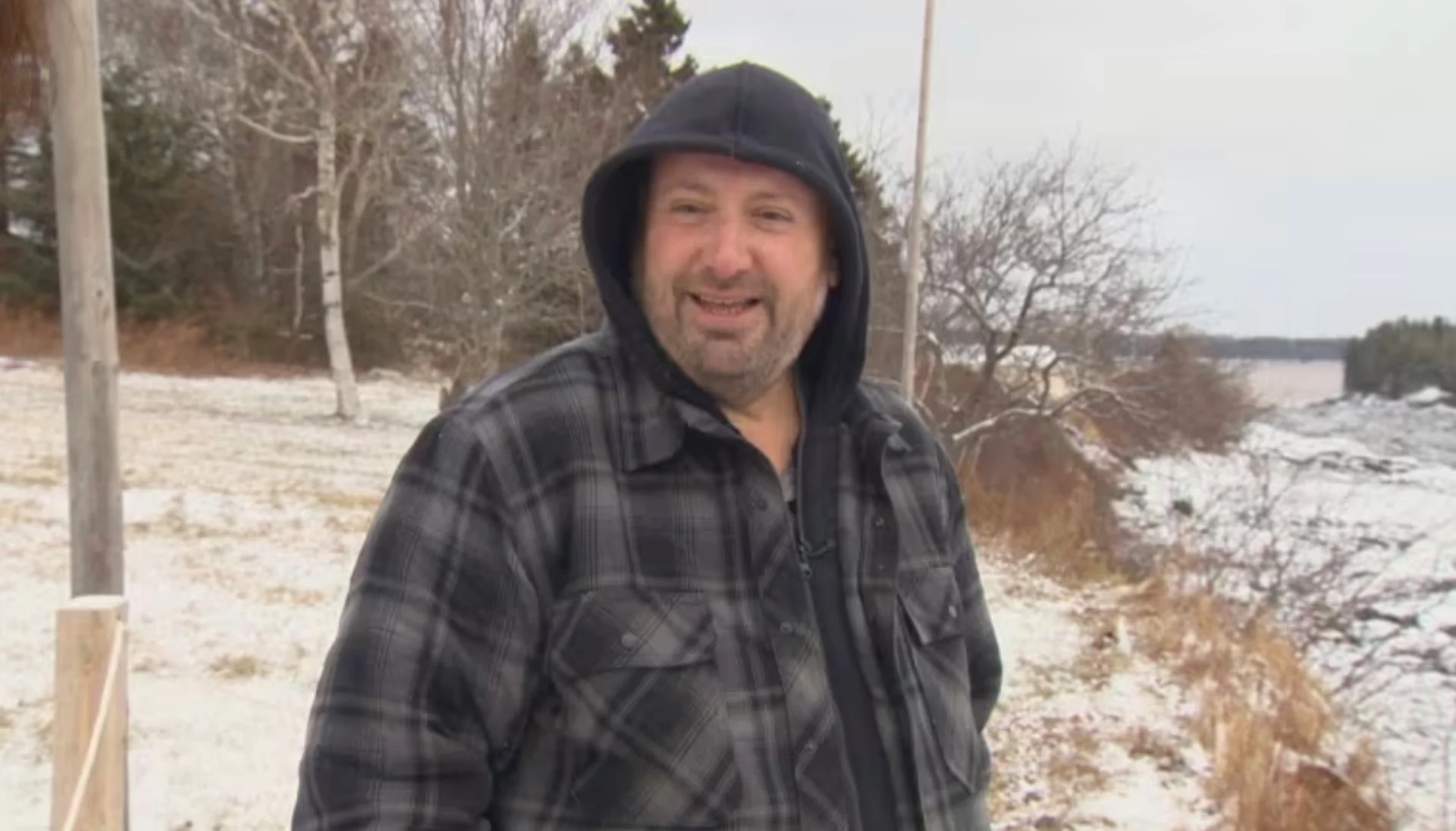
Worries about N.B. coastal erosion rise after damage from 3 storms in a month
After the first of the pre-Christmas Monday storms, Lorneville resident Paul Mangion said it was the worst his waterfront property had seen.
"So I thought, OK, well, if that's the worst one, it wasn't too bad here," he said.
Then came a second storm a week later and a third one on Jan. 13.
"The last one we had, well, that was a whole other ball game."
Where the previous storms didn't even reach the stairs to the beach at his place, the Jan. 13 storm surge covered them.
SEE ALSO: Living shoreline provides living lesson for P.E.I. property owners, groups_
"They're all crooked now because they've washed away the rocks underneath them."
He also kept an eye on the waterfront rental property he owns three doors down. That house sits atop a 10-metre cliff to the beach below. During previous storms, the water level hasn't reached the cliff, but during the last storm, it did.
The powerful waves ate away at the cliff wall, leaving a pile of rocks, dirt and vegetation at the bottom of the cliff. He believes it's only a matter of time before more of the backyard is lost to the sea.
Although Mangion hasn't owned the property for long, neighbours have told him the backyard has lost about six metres to erosion over the last 30 years.
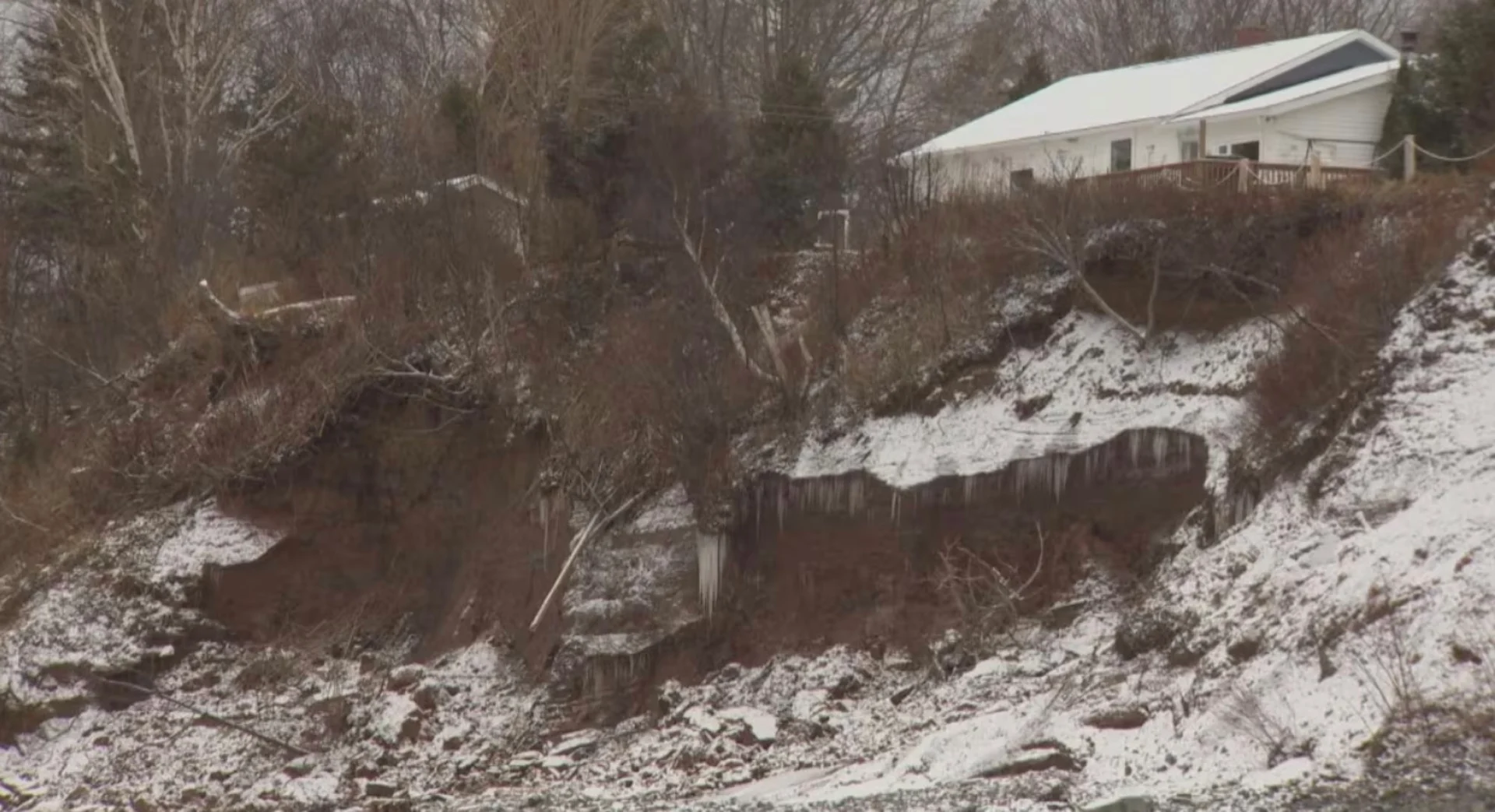
Sections of the cliff behind Paul Mangion's Lorneville property were washed away with the Jan. 13 storm surge, the third in a month. (Mike Heenan/CBC)
"I don't know if that was a freak, once-every-10–years [storm] or that's going to be the new norm."
Jeff Ollerhead, a professor of geography and the environment at Mount Allison University, said it's too soon to say for sure, although it's likely that storms are going to be more severe and frequent in the future.
He said scientists need 30 years of data "before they would say something is absolutely true."
"What we can say is that what we're seeing fits the models which predict that we will have more storms and that it will be more severe," said Ollerhead.
Fundy coast 'less vulnerable'
Dominique Bérubé, a coastal geomorphologist with the Department of Natural Resources and Energy Development, said the coast of the Bay of Fundy is less vulnerable to erosion than areas along the province's northeast and southeast coasts.
"The geological context (ex: higher cliffs and more resistant rocks) and the fact that you are not as frequently exposed to major storms (far from the usual trajectory of post-tropical storms) make your region less vulnerable," Bérubé wrote in an email.
Ollerhead said coastal erosion is a perfectly natural phenomenon and "is what results in the sediments that give us things like beaches and so on.
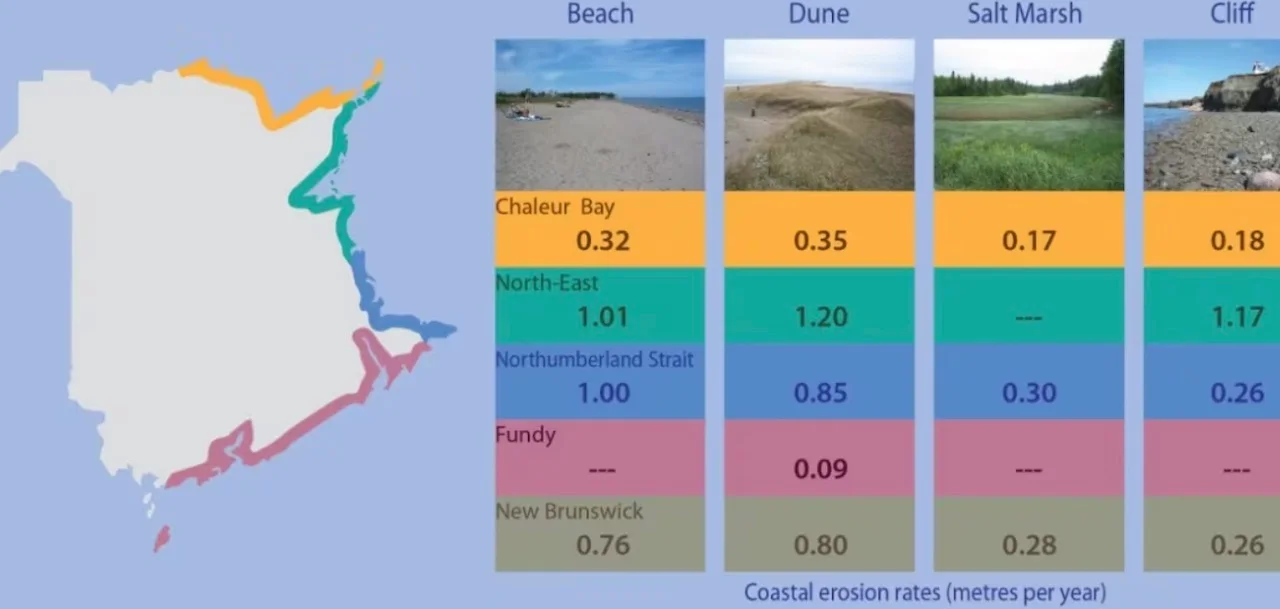
This graphic shows how New Brunswick is losing coastline every year, although it varies between regions and type of coastline. (Government of New Brunswick)
Perplexing paradox
"So if we successfully stopped all erosion, we would lose many of the features along our coast that we actually value. So that's the paradox there."
Ollerhead said property owners have three options.
The first option is to "employ coastal protection of some form, but that's expensive and it's going to become more expensive to maintain as we go forward" as sea levels continue to rise and storms become more frequent and intense.
"If you're willing to spend enough money you can protect almost anything," said Ollerhead.
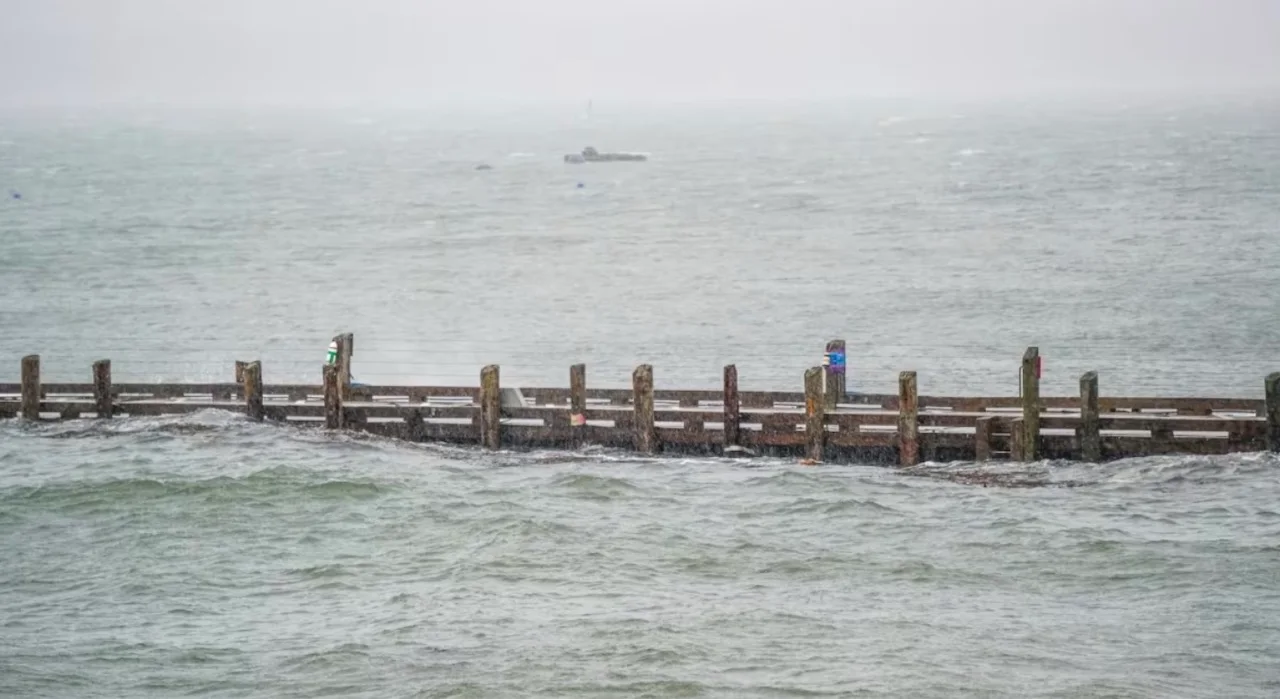
Water pours over the wharf in Saint Andrews on Jan. 13. (Submitted by Cindy Kohler)
The second is to move structures back and/or up.
"The third option, which is usually the unpalatable option, but in some cases may be the only option, is to simply retreat altogether," said Ollerhead.
Essentially, just walk away.
He said it clearly depends on the infrastructure. For example, it might be easier to walk away from a cottage than the bridge abutments for the Confederation Bridge.
After Hurricane Katrina devastated New Orleans in 2005, for example, huge areas of the city were not rebuilt because it just wasn't worth the amount of money that it would take to make the area safe from future flooding.
Closer to home, said Ollerhead, is the Red Head area of Saint John, where houses perched on the edge of an eroding cliff for years before some were lost and others moved to safer ground.
Trying to stop the erosion in that case was just not worth the effort and expense, he said.
"There are places where the cost and the difficulty of trying to do something other than retreat is just too high," said Ollerhead.
"It would make more sense to offer property owners fair market value for their properties and move out. There will always be the person who says 'I don't want to do that,' but faced with the cost, if they had to pay the cost of the shoreline protection, the cost would be double or triple the cost of their property."
King tide event
The Jan. 13 storm created a "king tide event," explained Briana Cowie, the executive director of Eastern Charlotte Waterways Inc., an environmental non-profit.
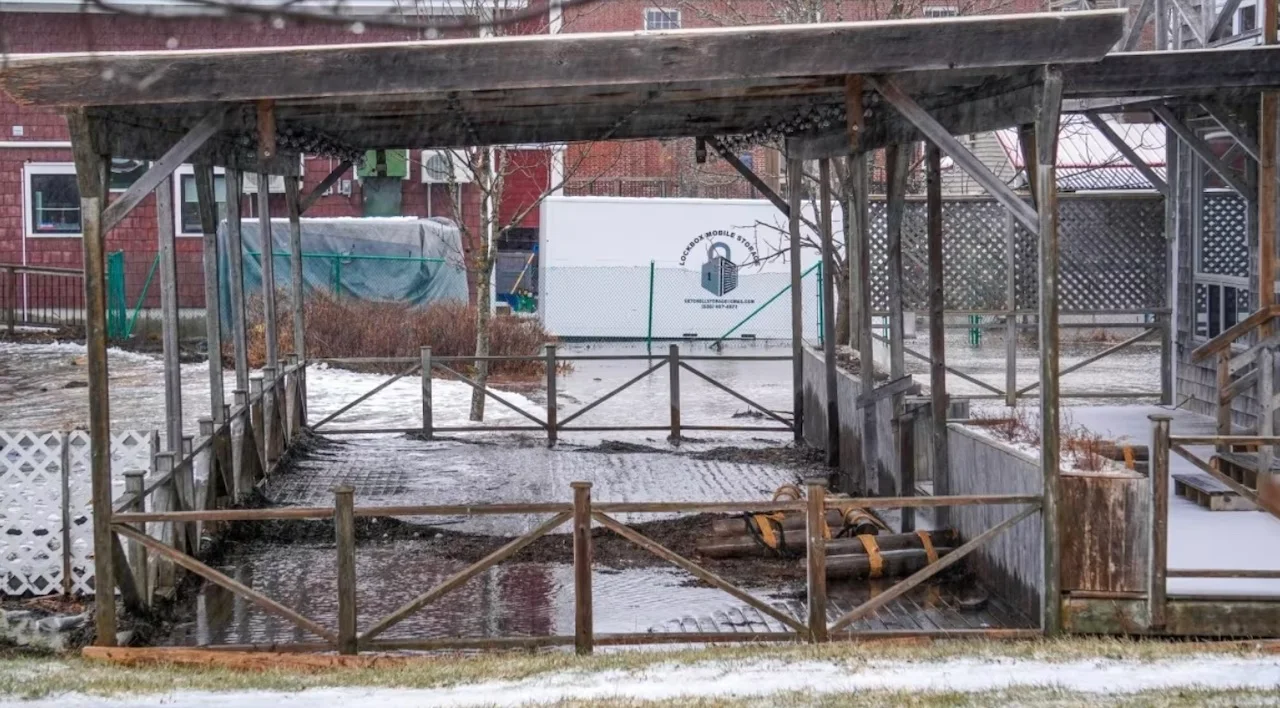
Properties like this one along the coast in Saint Andrews were hit by a tidal surge on Jan. 13. (Submitted by Cindy Kohler)
She said it resulted in a 7.8-metre high tide around 1:30 p.m. on Jan. 13.
"That's about 26 feet, so it's very considerable. And of course, the minute you get something like that height of water mixed with a little bit of wind, it can do some pretty significant damage."
Cowie said her group does a lot of comparisons between storms and has noticed "areas where adaptive actions" have been undertaken over the last 10 years have fared better in recent storms.
She uses the Saint Andrews example of the Van Horne Trail, where there was significant damage during a 2020 storm.
When the town repaired the damage, they raised the trail. As a result, Cowie said the damage caused by the Jan. 13 storm was minimal.
Considering options
Mangion said he's worried about the future of his properties — especially the rental property on the coast.

Saint Andrews was hit by a 'king tide event' on Jan. 13, says Briana Cowie, executive director of Eastern Charlotte Waterways Inc. (Submitted by Cindy Kohler)
"That's why I'd like to start putting some money aside. I don't know what it's going to cost to buy big concrete blocks and lower them down there or have trucks dump stone or whatever an engineer says."
For now, he'd like to get some property tax money back to put away for the project. Having just received his property tax assessment notice, he's not content paying more money for less land that will likely continue to shrink in the future.
"Last time I checked, the ice was still melting in the Arctic," said Mangion.
WATCH: Wetlands could hold the key to carbon sequestration in our oceans
Thumbnail courtesy of Mike Heenan/CBC.
The story was originally written by Mia Urquhart and published for CBC News.






